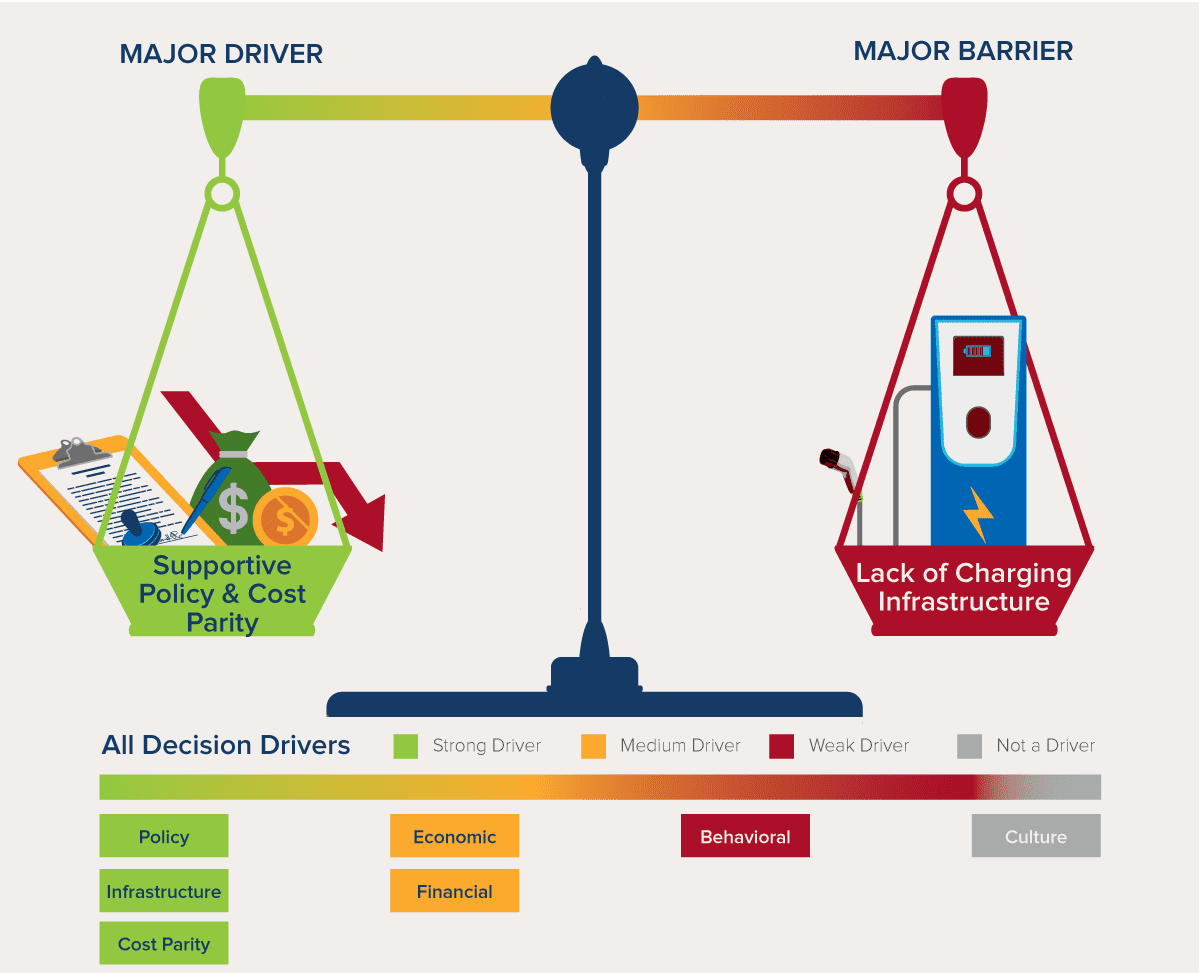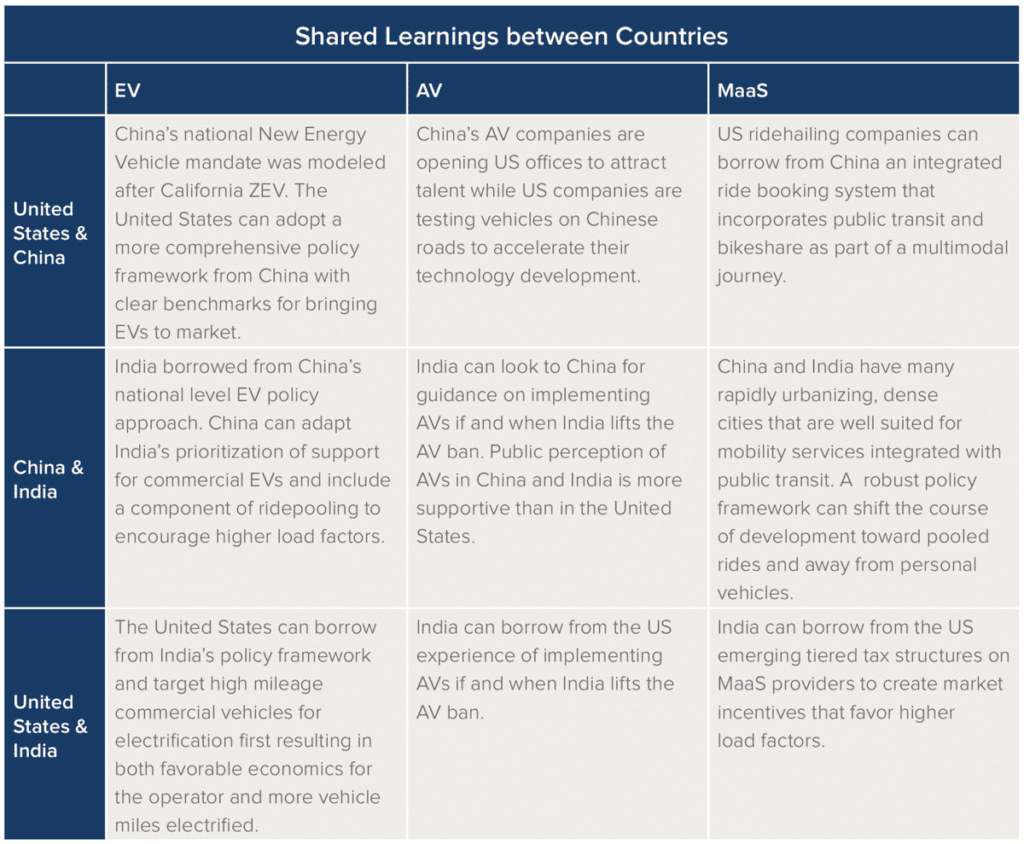Evolution of Three Major EV Markets: China, US and India

The Rocky Mountain Institute has published a new whitepaper that looks at the penetration of electric vehicles in these three markets and has evaluated the role of policy, economics, infrastructure, and behavioral norms in shaping the mobility transformations in these three countries.
Following are the insights and recommendations for accelerating EV adoption across the three countries:
- Falling battery costs will bring EVs to price parity with combustion vehicles in the next 5–10 years across all three countries. While prices will naturally fall as scale and learning continue, supportive policies are needed to accelerate this transition and help overcome behavioural norms that bias toward gas vehicles and the advantages of already-built fuelling infrastructure.
- A set of coordinated but distinct policies targeting both automakers and consumers with a healthy balance of rewards and punishments has proven to be most effective in China. However, each country has different capacities and appetites for top-down mandates versus subsidies and incentive packages.
- Focusing finite EV subsidies on high-utilisation vehicles—as has been done in India—allows for the greatest leverage of public funds to increase electric vehicle miles while creating broad public exposure to EVs.
- A coordinated and collaborative approach to charging infrastructure investment and buildout that engages the public and private sectors across both the transportation and electricity sectors is required for quick and efficient deployment of infrastructure at the level required to support rapid EV adoption.
 The report analyses the advent of ride-hailing services such as Ola, Lyft, Uber, and Didi. They have shown rapid growth in all three countries, particularly in dense urban areas. It adds that these mobility services have the potential to reduce congestion if rides are pooled and integrated with public transit.
The report analyses the advent of ride-hailing services such as Ola, Lyft, Uber, and Didi. They have shown rapid growth in all three countries, particularly in dense urban areas. It adds that these mobility services have the potential to reduce congestion if rides are pooled and integrated with public transit.
It highlights that China and India have the potential to leapfrog the American paradigm of car ownership due to their rapid urbanization and less entrenched car culture. The report also dwells on autonomous vehicle technology and adds that China’s funding and research into AV technology will likely accelerate the pace of AV development globally.
The report talks about how China, India, and the United States are at different stages of development in these emerging technologies and they have the opportunity to share learnings and adapt each other’s frameworks to accelerate the global mobility transition.
It further adds that since both India and China are the two fastest-developing economies in the world, they aspire to become global leaders in vehicle manufacturing and intelligent mobility technologies. These countries are playing roles in shaping global mobility future to ensuring that the world gets the best mobility future possible, the report said.
To read more about the report, click here




